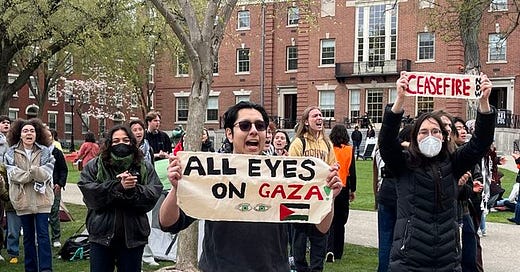Saving Private Ryan, the Spielberg WWII biopic, follows a group of GI’s tasked, as part of the army’s sole survivor policy, with finding and bringing home the last of four brothers yet to be killed in battle. It’s considered one of the greatest war movies of all time, and along with 481 million in 1998 ticket sales, won multiple awards. According to Wikipedia, the movie “impacted many subsequent war, action and superhero films.”
Spielberg wanted his scenes to be as life-like as possible, hiring two A-list filmmakers to interview war-veterans for key details with which to coach the actors. Its battle scenes were particular harrowing for their realism, but what I remember are the battle-injury scenes. There, the research shows as well, particularly in scenes of wounded GI’s so shocked with pain they were taken over by a particular kind of trembling, arms held out in infantile helplessness, uncontrollably shaking.
They were horrific scenes and I thought I had forgotten them. Then one evening I was watching news coverage of Gaza, and there it was, the exact same arm-shaking motif, but rather than the khaki-clad arms of an actor playing a soldier, they were the bare arms of a young Palestinian girl covered in blast-dust, her hands purple with burns, held out in actual, not acted, helplessness. There seemed to be no pain medication or anesthetic, likely due to the blockade. Relatives held her as a doctor poured some antiseptic into a hole below her shoulder, the voltage of pain shaking her body as she held out her vibrating arms and screamed.
I am still trying to reconcile these two images. One was lavishly promoted, displayed in theaters, showered with half a billion in ticket confetti, mine included, while the other flashed briefly on an independent news outlet. One scene was shot with the highest possible production values, the other with a phone-camera in a crowded, blood-stained hospital. One was magnificently acted, the other unbearably suffered.
Campaigns against cruelty place nearly sacred hope in the power of revelation, that when horrors are revealed people will react. Opinion will shift. The gears of change will engage. But what if cruelty is made visible and nobody looks, or we look away? What if we were to become screen-addled, capable of watching a slaughter without being moved? For the human soul, would that not be a nightmare in its own right?
Until the student uprising, it was looking like such a nightmare might come to pass, that despite scattered and determined protests, the body politic would simply fail to cohere in a consequential way. These students are saving us from that dreadful fate, and we owe them more than we can probably realize. And interestingly enough, it’s the generation most saturated with screens, who should be tuned out, tuned elsewhere, that are instead leading us through the screens, showing us the moral clarity so lacking in our institutions and news outlets.
Patrick Mazza, who writes The Raven, calls it a “Revolution of Empathy.” Empathy is the perfect choice of words. It’s less a political stance than a human commitment, a capability of the spirit that must be kept alive at all costs. These students are doing just that, keeping empathy alive, and we owe them our gratitude and support.
Against warnings of humanitarian catastrophe, Israel is launching its planned invasion of Rafah, with more agonies to follow. The Rafah border-crossing is closed, no aid is getting in and bombing has resumed in the north. On Monday, Hashem Ghazal, a deaf Palestinian man known as the “Godfather of the Deaf” for his work with the deaf community of Palestine, was killed along with his wife in an air strike. According to reports, seven of their nine children were severely injured.
Imagine the scene.





Yes. What alarms me are the many, many, many people on social media who are incapable of feeling any empathy. They are impervious to logic or facts. They are soulless.
My heart is breaking...thank you and Patrick for sharing a vision that brings hope. I will go to the encampment at WWU and thank them.❤️